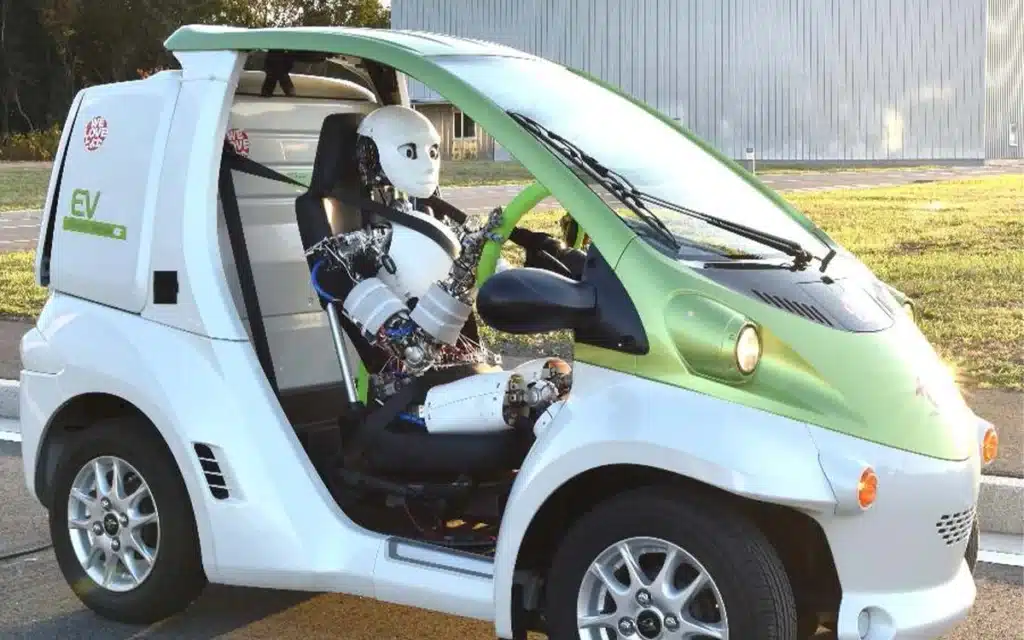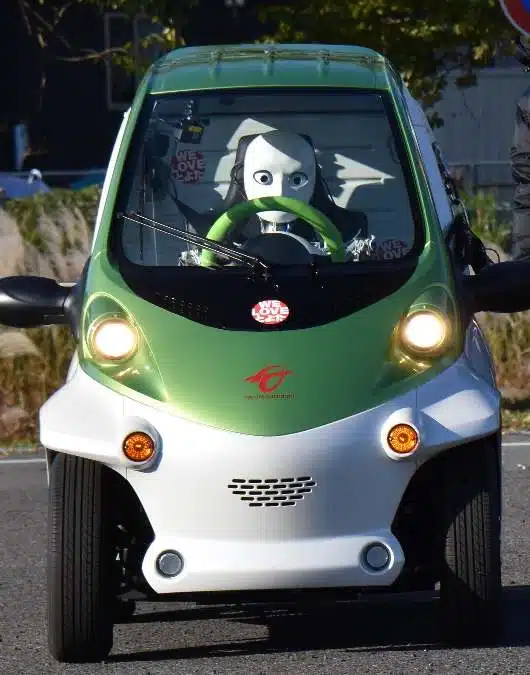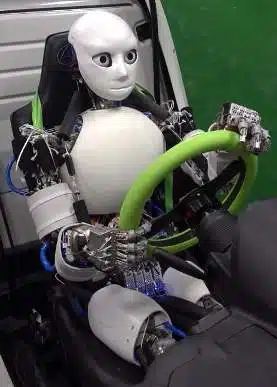Japan releases footage of humanoid in driving seat of micro-EV
- Researchers developed a humanoid robot that can drive a car
- They ‘taught’ it how to drive
- It’s not perfect at it, but it can handle itself
Published on Jun 17, 2024 at 3:17 PM (UTC+4)
by Siddharth Dudeja
Last updated on Jun 17, 2024 at 6:06 PM (UTC+4)
Edited by
Tom Wood
When the entire world is racing to get autonomous cars out on the roads, a team of researchers in Japan is working on getting a humanoid robot to drive a car, and they shared a video of one of these robots driving a micro-EV.
You heard that right — the researchers at the University of Tokyo ‘taught’ the ‘musculoskeletal humanoid’ called Musashi how to drive a car.
Of course, the tests took place in safe environments on test tracks, but they claim the humanoid is ready to hit the road.
READ MORE: Tesla deploys two Optimus robots to work in its factory
Humanoid robot drives an EV in Japan

Musashi received special driving classes before going to driving school, and it now knows how to handle a steering wheel and when to hit the brakes.
But that certainly is not everything you need while driving.
Fortunately, it is also aware of its surroundings and can ‘smartly’ make decisions when it drives the car.
This shouldn’t come as a surprise, though.
Why is that, you ask?
Well, we already saw a humanoid robot that can pilot an entire airplane.
Researchers at the University of Tokyo further claim that the robot’s flexibility, multiple sensors, and efficient data processing make it suitable for driving a car.
They also published the details and findings of their testing in a research paper.
The footage shows Musashi driving the micro-EV along with its thought process in real time.
If you’re interested, you can watch the almost four-minute-long footage below.
Now that we know it can drive a car in Japan, that still doesn’t mean it can drive it all too well — yet.
While testing its capabilities, Musashi barely lifted its mechanical foot off the brake pedal when making a turn.
It’s not perfect just yet, and according to the researchers’ findings, it took the robot two minutes to complete that turn.
Where are autonomous cars headed?


Autonomous cars, driverless cars, or cars driven by a humanoid robot serve a similar purpose — getting humans to travel in a car that another human isn’t driving.
The race to get to that point where we have an ideal world of driverless cars is on, but we’re far from it.
Self-driving cabs, like Waymo, do exist — but unless you want to get an autonomous Uber with an unreasonable amount of traffic violations, you should wait a bit longer.
Moreover, Tesla’s FSD is trying to achieve a similar goal by taking some load off human drivers.
It will take a while to get humanoid robots driving cars seamlessly, but we’re getting there.
Such robots seem to be the next big thing anyway.
We already have humanoids with a speed record or unlimited movement ability.
DISCOVER SBX CARS: The global premium car auction platform powered by Supercar Blondie




